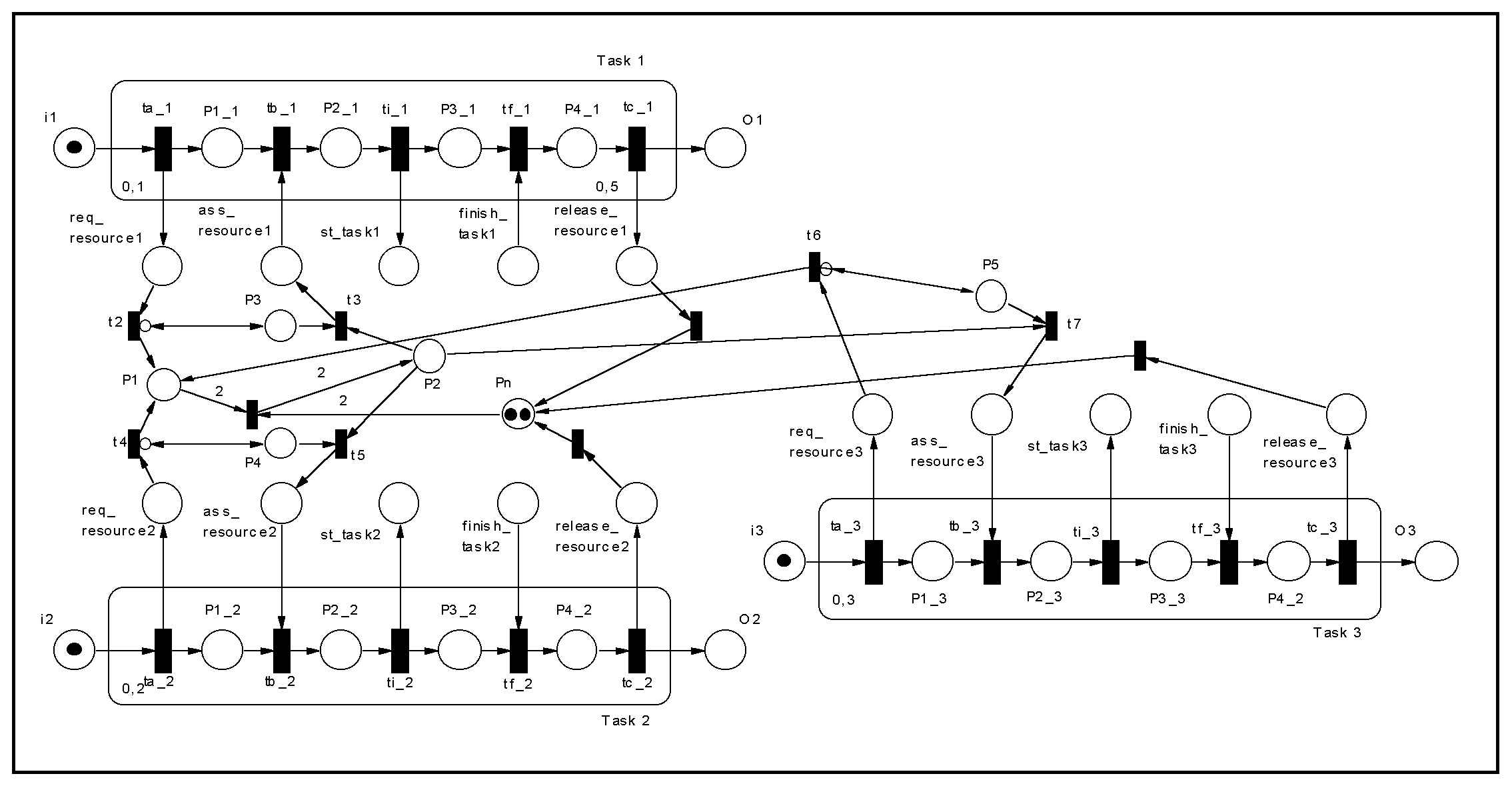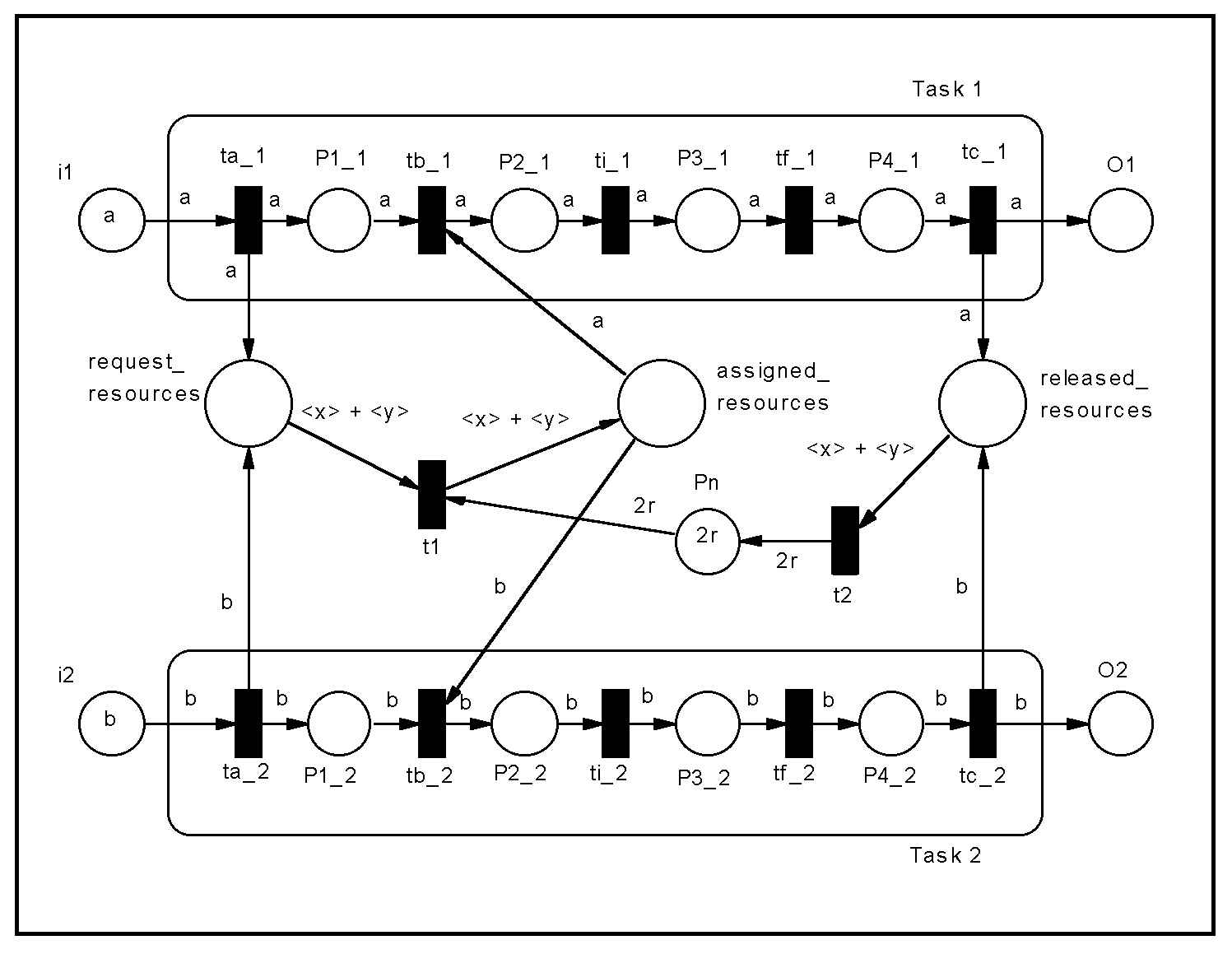Simultaneity N
Figure 31 shows the coordination mechanism for the
simultaneity, which assigns a resource only if N tasks request it simultaneously.
The model has a place Pn with n tokens (in the figure, n=2, as indicated
by the two tokens in Pn) that return to this place at the end of
the tasks (via release_resource). Place Pn is connected to
transition t1 by an arc with weight N. Transition t1 fires
only when there are n tokens in Pn (indicating n available
instances of the resource) and also n tokens in P1 (indicating
that n tasks have already requested the resource). After the firing,
t1 sends n tokens to P2, which distributes them among
the n assigned_resource places. Places P3 and P4 are
used to indicate which tasks have requested the resource and to avoid that
the same task requests the resource more than once (i.e., the resource
must be assigned to n distinct tasks).

Figure 31: Coordination mechanism for simultaneity 2.
Since resource management dependencies are not binary relations, it
is possible that more than two tasks request simultaneity in the use of
resources. Figure 32 shows an example of three tasks
with interdependency simultaneity 2.

Figure 32: Coordination mechanism for simultaneity 2 with three
tasks.
Figure 33 shows the mechanism for simultaneity
2 modeled with high level PN. In the figure, the arcs with expression <x>+<y>
ensure that two different tasks (tokens of different colors) which are
requesting the resources (tokens r) are going to receive them if
they are available in place Pn. Note that this model is simpler
than that of Figure 31. Another important aspect,
is that the addition of a new task in this model can be done by attaching
the new task to places request_resources, assigned_resources
and release_resources, in a simpler way than that of Figure
32.

Figure 33: Simultaneity 2 using high level PN.
<< Back



